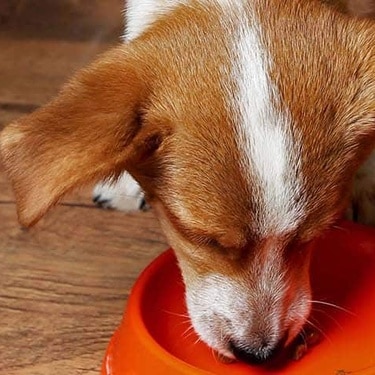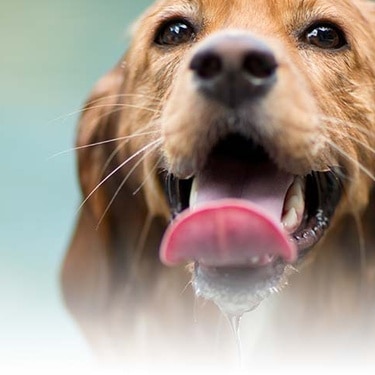
-
Find the right food for your petTake this quiz to see which food may be the best for your furry friend.Find the right food for your petTake this quiz to see which food may be the best for your furry friend.Health CategoryFeatured products
 Adult Salmon & Brown Rice Recipe Dog Food
Adult Salmon & Brown Rice Recipe Dog FoodSupports lean muscle and beautiful coat for adult dogs
Shop Now Adult 7+ Healthy Cuisine Roasted Chicken, Carrots & Spinach Stew Dog Food
Adult 7+ Healthy Cuisine Roasted Chicken, Carrots & Spinach Stew Dog FoodDelicious roasted chicken paired with tender vegetables in a succulent stew
Shop Now Perfect Weight & Joint Support Large Breed Chicken & Brown Rice Recipe Dog Food
Perfect Weight & Joint Support Large Breed Chicken & Brown Rice Recipe Dog FoodThis weight management and mobility support dog food was created with Hill’s unique understanding of the biology of overweight dogs
Shop NowFeatured products Adult Salmon & Brown Rice Recipe Cat Food
Adult Salmon & Brown Rice Recipe Cat FoodSupports lean muscle and beautiful fur for adult cats
Shop Now Adult Urinary Hairball Control Tender Chicken Dinner Cat Food
Adult Urinary Hairball Control Tender Chicken Dinner Cat FoodPrecisely balanced nutrition to support urinary health from kidney to bladder. With natural fibre technology to help reduce hairballs.
Shop Now Adult Perfect Weight with Chicken Cat Food
Adult Perfect Weight with Chicken Cat FoodBreakthrough nutrition for your cat’s healthy weight maintenance and long-lasting weight support
Shop Now -
DogCat
- Cat Tips & Articles
-
Health Category
- Weight
- Skin & Food Sensitivities
- Urinary
- Digestive
- Kidney
- Dental
- Serious Illness
-
Life Stage
- Kitten Nutrition
- Adult Nutrition
Featured articles The Right Diet For Your Pet
The Right Diet For Your PetLearn what to look for in healthy pet food & nutrition, including ingredients, quality of the manufacturer, your pet's age, and any special needs they have.
Read More Water
WaterWater is the most important nutrient of all and essential for life. Animals can lose almost all their fat and half their protein and still survive, but if they lose 15% of their water, it will mean death.
Read More Pet Food Storage Tips
Pet Food Storage TipsWhere you store your cat and dog food can make a big difference in the quality and freshness once it is opened. Here are some common questions and recommendations for optimal storage for all of Hill’s dry and canned cat and dog food.
Read More -
Prepare your pet for any emergency
Prepare your pet for any emergency
Whether it’s a fire or flood, most pet parents don’t consider their pet’s safety until an emergency is already happening. Small preparations now can save you and your pet's precious time in case disaster strikes.
Keep your home safe
Check smoke detectors
On average, it is recommended to check them every month and replace their batteries every two years.
Note your pet’s hiding spaces
Remember that pets can be harder to find in stressful situations.
Practice safe habits around the home
Never leave lit fireplaces or candles unattended.
Keep a rescue alert sticker visible
Leave one by your front door so rescue workers know what pets to look for.













Keep your home safe
Check smoke detectors
On average, it is recommended to check them every month and replace their batteries every two years.
Note your pet’s hiding spaces
Remember that pets can be harder to find in stressful situations.
Practice safe habits around the home
Never leave lit fireplaces or candles unattended.
Keep a rescue alert sticker visible
Leave one by your front door so rescue workers know what pets to look for.













Emergency Resources
In case your pet is lost
Contact local shelters, veterinary clinics, and animal control
These are the most common places a lost pet will be returned if found. Animal shelters and clinics are also able to identify your pet’s microchip ID and, if up-to-date, will be able to contact you.
Search your neighbourhood
Circle the perimeter of your home with a familiar call or nickname that you use for your pet. With each pass, try to move farther out.
Notify the neighborhood
Post to a local networking site, tape posters of your lost pet on trees and community commonplaces, and don’t give up hope.
In case your pet is lost
Contact local shelters, veterinary clinics, and animal control
These are the most common places a lost pet will be returned if found. Animal shelters and clinics are also able to identify your pet’s microchip ID and, if up-to-date, will be able to contact you.
Search your neighbourhood
Circle the perimeter of your home with a familiar call or nickname that you use for your pet. With each pass, try to move farther out.
Notify the neighborhood
Post to a local networking site, tape posters of your lost pet on trees and community commonplaces, and don’t give up hope.
Want to help out?
There is always a need to support shelters since they may also be sheltering those that have become separated from their family.










Some of the simplest ways to help a local shelter include making donations and signing up as a shelter volunteer. or foster carer. If this seems like something you would be interested in, make sure to check with the shelter ahead of time so you can provide the support they need without unnecessary confusion.
Another often overlooked way you can help is by becoming a shelter advocate. Simply making a blog or social media page about your local shelters can encourage others to participate or adopt.
Interested in learning about how Hill’s helps in times of disaster?
Check out information on our Hill’s Food, Shelter & Love program, and how we help shelters and pets in times of need.
Interested in learning about how Hill’s helps in times of disaster?
Check out information on our Hill’s Food, Shelter & Love program, and how we help shelters and pets in times of need.

